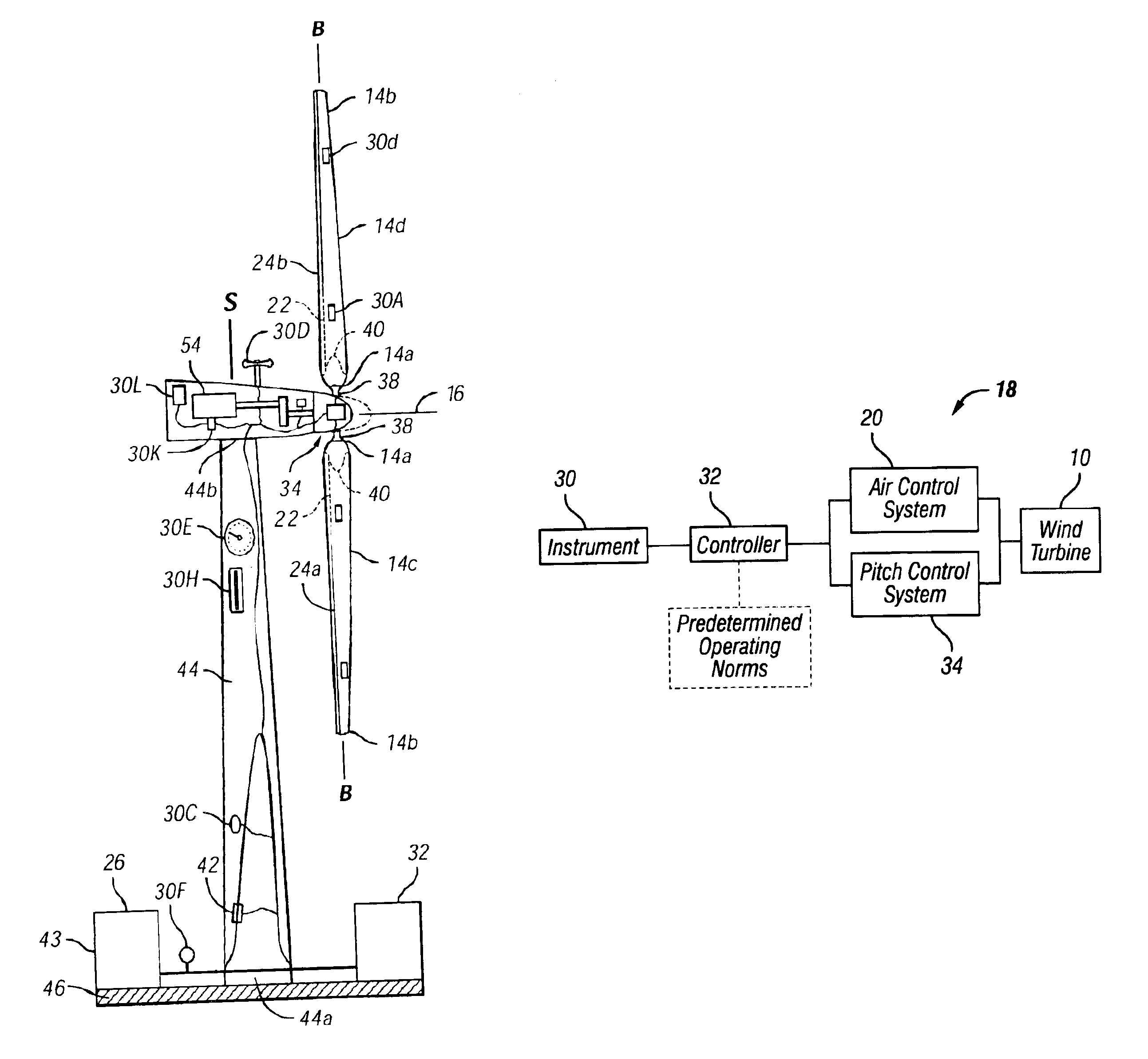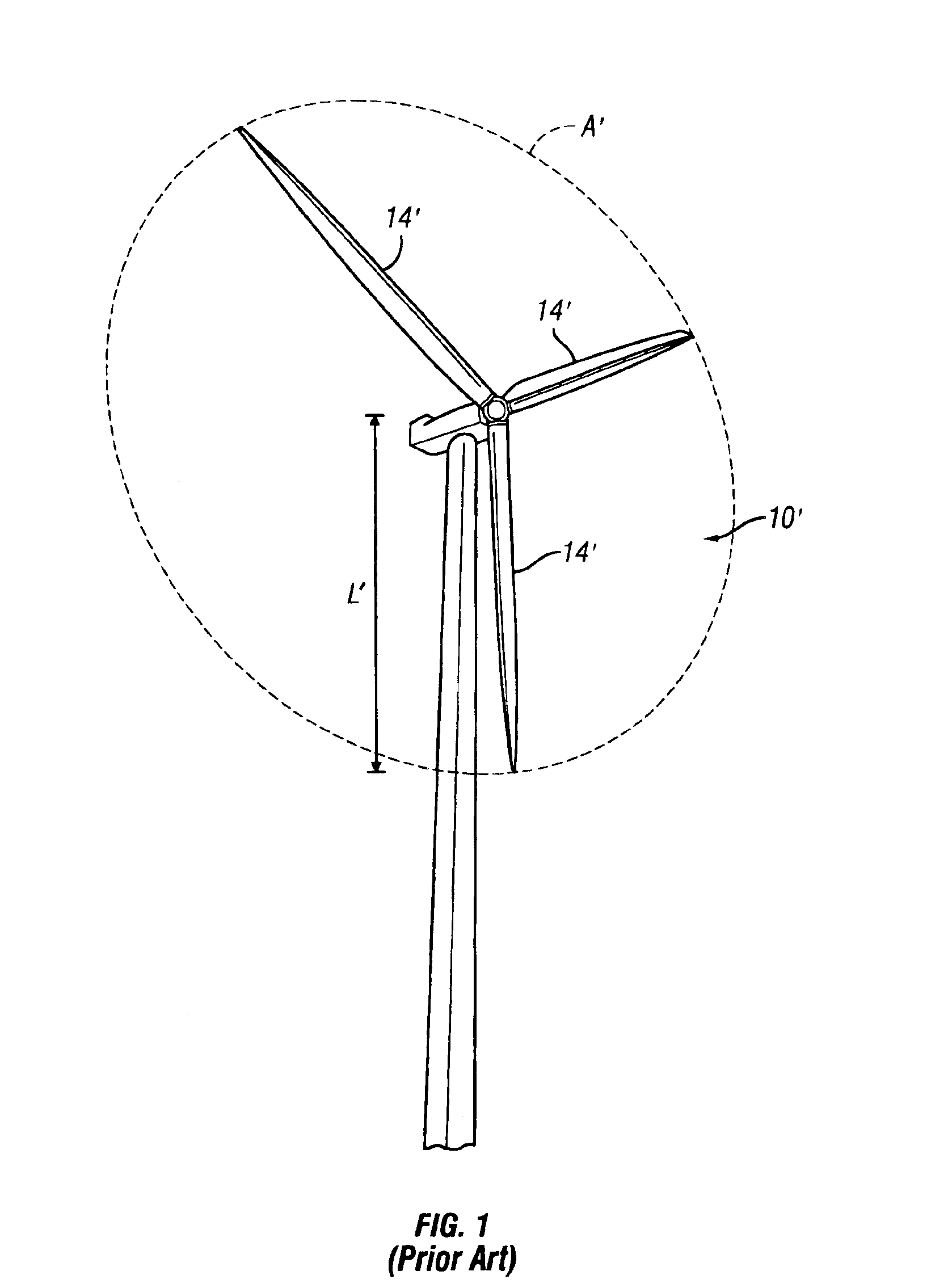Advanced aerodynamic control system for a high output wind turbine
a technology of aerodynamic control system and high output wind turbine, which is applied in the direction of electric generator control, machines/engines, mechanical equipment, etc., can solve the problems of stall control wind turbines b>10/b>′ generally not operating efficiently, acquisition costs generally significantly higher, and loss of revenue and/or power production interruption
- Summary
- Abstract
- Description
- Claims
- Application Information
AI Technical Summary
Benefits of technology
Problems solved by technology
Method used
Image
Examples
Embodiment Construction
[0029]Referring to the drawings in detail, wherein like numerals indicate like elements throughout, there is shown in FIGS. 2-6, a preferred embodiment of an advanced aerodynamic control system 18 for a high output wind turbine 10, in accordance with the present invention.
[0030]In the preferred embodiment, the advanced aerodynamic control system 18 for the wind turbine 10 includes a drive shaft 12 and at least one blade 14. The drive shaft 12 and blade 14 are rotatable about a drive shaft axis 16. The control system 18 measures operating data of the wind turbine 10 and adjusts certain wind turbine parameters to control the extraction of power from the wind turbine 10 at a specific wind speed. The control system 18 includes an air control system 20 that is coupled to a duct 22. The duct 22 extends from a first end 14a of the blade 14 toward a second end 14b of the blade 14. The blade 14 also includes at least one slot 24 extending along at least a portion of a surface of the blade 14...
PUM
 Login to View More
Login to View More Abstract
Description
Claims
Application Information
 Login to View More
Login to View More - R&D
- Intellectual Property
- Life Sciences
- Materials
- Tech Scout
- Unparalleled Data Quality
- Higher Quality Content
- 60% Fewer Hallucinations
Browse by: Latest US Patents, China's latest patents, Technical Efficacy Thesaurus, Application Domain, Technology Topic, Popular Technical Reports.
© 2025 PatSnap. All rights reserved.Legal|Privacy policy|Modern Slavery Act Transparency Statement|Sitemap|About US| Contact US: help@patsnap.com



